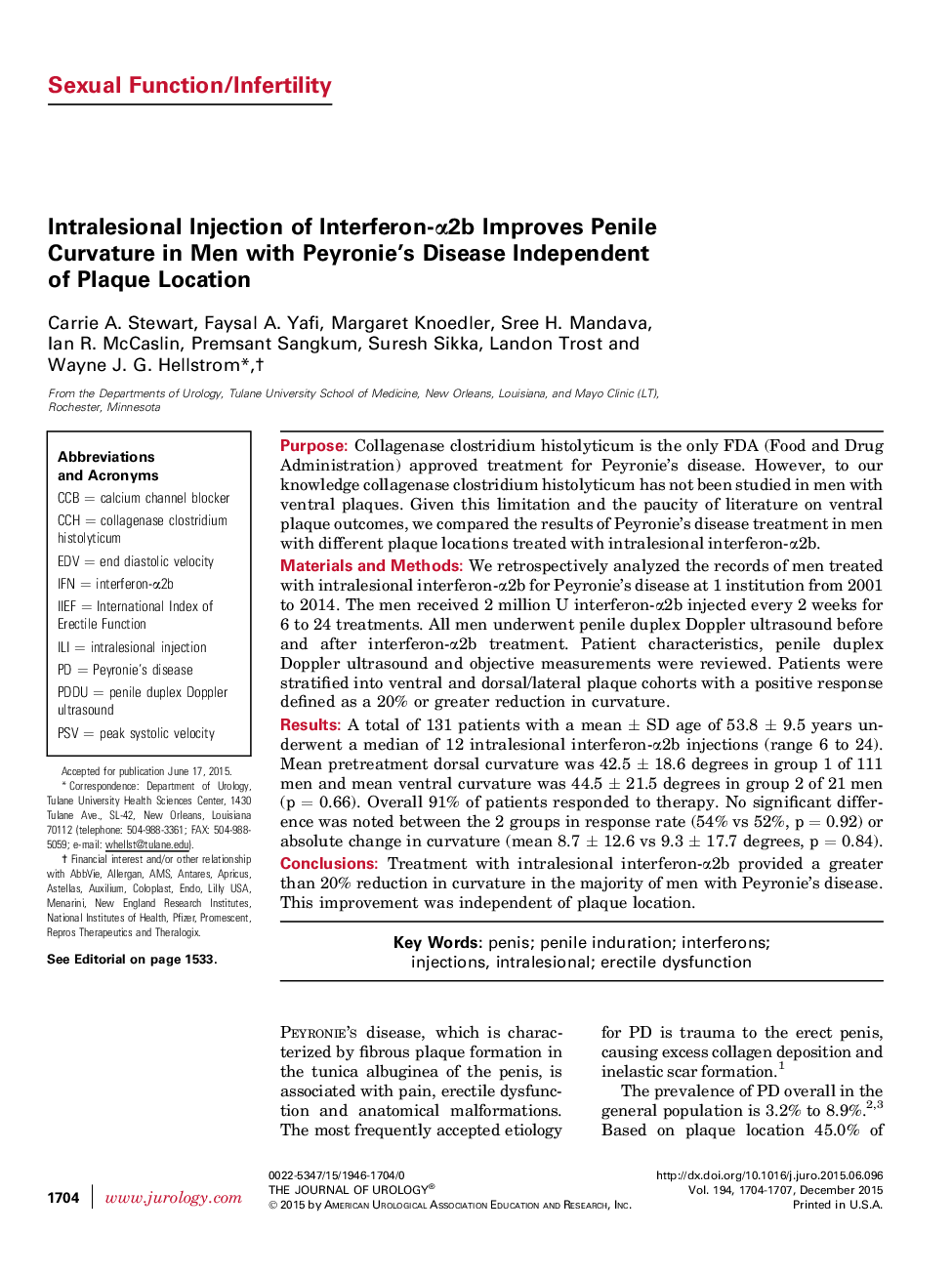| Article ID | Journal | Published Year | Pages | File Type |
|---|---|---|---|---|
| 3860377 | The Journal of Urology | 2015 | 4 Pages |
PurposeCollagenase clostridium histolyticum is the only FDA (Food and Drug Administration) approved treatment for Peyronie's disease. However, to our knowledge collagenase clostridium histolyticum has not been studied in men with ventral plaques. Given this limitation and the paucity of literature on ventral plaque outcomes, we compared the results of Peyronie's disease treatment in men with different plaque locations treated with intralesional interferon-α2b.Materials and MethodsWe retrospectively analyzed the records of men treated with intralesional interferon-α2b for Peyronie's disease at 1 institution from 2001 to 2014. The men received 2 million U interferon-α2b injected every 2 weeks for 6 to 24 treatments. All men underwent penile duplex Doppler ultrasound before and after interferon-α2b treatment. Patient characteristics, penile duplex Doppler ultrasound and objective measurements were reviewed. Patients were stratified into ventral and dorsal/lateral plaque cohorts with a positive response defined as a 20% or greater reduction in curvature.ResultsA total of 131 patients with a mean ± SD age of 53.8 ± 9.5 years underwent a median of 12 intralesional interferon-α2b injections (range 6 to 24). Mean pretreatment dorsal curvature was 42.5 ± 18.6 degrees in group 1 of 111 men and mean ventral curvature was 44.5 ± 21.5 degrees in group 2 of 21 men (p = 0.66). Overall 91% of patients responded to therapy. No significant difference was noted between the 2 groups in response rate (54% vs 52%, p = 0.92) or absolute change in curvature (mean 8.7 ± 12.6 vs 9.3 ± 17.7 degrees, p = 0.84).ConclusionsTreatment with intralesional interferon-α2b provided a greater than 20% reduction in curvature in the majority of men with Peyronie's disease. This improvement was independent of plaque location.
